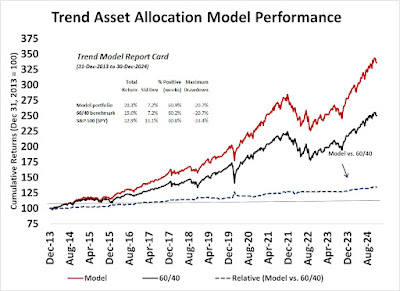The Trend Asset Allocation Model is an asset allocation model that applies trend-following principles based on the inputs of global stock and commodity prices. This model has a shorter time horizon and tends to turn over about 4-6 times a year. The performance and full details of a model portfolio based on the out-of-sample signals of the Trend Model can be found here.
- Ultimate market timing model: Buy equities (Last changed from “sell” on 28-Jul-2023)*
- Trend Model signal: Neutral (Last changed from “bullish” on 15-Nov-2024)*
- Trading model: Neutral (Last changed from “bullish” on 17-Jan-2025)*
Update schedule: I generally update model readings on my site on weekends. I am also on X/Twitter at @humblestudent and on BlueSky at @humblestudent.bsky.social. Subscribers receive real-time alerts of trading model changes, and a hypothetical trading record of those email alerts is shown here.
Subscribers can access the latest signal in real time here.
A high volatility regime
I told you there would be volatility. In the past week, investors have seen a fright over how advances in artificial intelligence may affect the AI ecosystem, Federal Reserve and European Central Bank interest rate decisions, earnings reports from Magnificent Seven companies such as Apple, Meta, Microsoft and Tesla, and a raft of Trump policy announcements and executive orders that surprised the market.Global economic policy uncertainty has spiked. Is it any wonder that market volatility follows suit?
The full post can be found here.
























